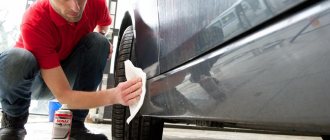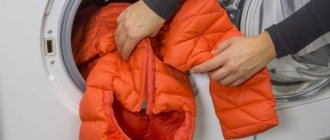How to attach an outdoor thermometer to a plastic window
Plastic windows are already installed everywhere in our apartments, industrial and administrative buildings. We can talk a lot about the advantages of such windows, and this is true. Such windows have already become mandatory in the construction and finishing of newly constructed buildings. Well, we are all “FOR”. But that’s not what we wanted to talk about now. And about additions to any window, be it plastic or wooden. About the thermometer, which shows us the temperature “overboard” of our “everyday vessel”.
How to properly install a thermometer in a room?
Make sure the thermometer
was placed at a height of 1.5 m from the floor and at a distance of 1 m from the outer wall.
Request measurements in each room. The time during which you should wait for the thermometer
is at least 10 minutes. Based on the results of the measurements, request the drawing up of a report.
Interesting materials:
Which drill to use for the dowel? What drill bit for tiles? What substance is used as a flux in the production of cast iron? What kind of grain do tits like? What grains should not be given to chickens? What diameter should the reinforcement for the foundation be? What diameter should the sewer pipe be? What color are plastic windows? What color curtains should I choose to match the gold wallpaper? What color curtains will go with orange wallpaper?
What is special about attaching a thermometer to a plastic window?
Why did we focus on the thermometer? Yes, because a plastic window is still an expensive product and structurally self-sufficient. By this we mean that drilling holes in plastic window frames is not advisable. Through holes will be a kind of small “cold bridges” when cold air enters the cavity of the frame, which means the window performs its main functions worse. This may be a minor deterioration, but for some this is not the main thing. Since, in addition, there is always a desire to keep the window in its original form. Moreover, it is unlikely that it will be possible to seal the hole and return the frame to its original appearance after removing the thermometer attached to the screws. That is why we will analyze the initial priority task. That is, the option of attaching the thermometer using elements that will not spoil the appearance and will not impair the performance characteristics of the plastic window. And then an example with self-tapping screws. In addition, let’s not forget to mention alternative thermometer options for monitoring the temperature outside. But first things first…
The safest and simplest methods for fixing a product
First of all, it is worth considering options for fixing the thermometer to the window, in which installation will take only a few minutes, and the frame material will not be subject to aggressive influence.
- Without the use of aids. The simplest and safest method for a window, which can be used if you need to secure a thermometer with flat elbows. You just need to use a knife or a thin screwdriver to pick up the rubber seal that holds the glass and push the upper part of the device under it first, and then the lower one.
- On glue. This composition will also not spoil a plastic window, but it is better to use it when working with very light and oversized objects. The difficulty is that for reliable fixation you will have to wait several minutes, creating increased pressure on the thermometer, only then will it stick securely.
- With Velcro or double-sided tape. Simple and quick approaches that, subject to process technology, guarantee reliable and long-lasting results. However, if the first time it was not possible to stick the product onto the plastic window evenly, nothing can be corrected.
- On suction cups. Not the most reliable option. Most often, a thermometer with suction cups is glued only under conditions of minimal exposure to external irritants, for example, on a closed but unglazed balcony.
Before fixing the thermometer with a sticky base, you must do the following:
- Wipe the working surface with turpentine, alcohol or other degreasing solution. This rule applies even to newly installed windows.
- Wipe the surface dry with a lint-free cloth, otherwise the structure will not even stick.
- Once the product is pressed to the window with the sticky side, it is prohibited to move it.
- If the item is glued so unevenly that it simply needs to be removed, it is best to use a knife on which we place a cloth soaked in solvent. Carefully remove the Velcro or tape, being careful not to scratch the material. After this, it is better not to glue the device to the same area; you will have to select a new zone.
Of course, such approaches will not hold the thermometer if there is a hurricane wind outside, but in other cases you can count on the device’s many years of service without any failures.
How to attach a thermometer to a plastic window using double-sided tape
This option is the most preferable. After all, we have already said that making holes in the frames of plastic windows is not an option. So, you can find ready-made solutions on sale. In fact, these are outdoor thermometers that are attached to glass or frame with double-sided mounting tape. Variations of such thermometers can also be very different, both mechanical and alcohol. Regardless of the design, thermometers are mounted as follows. The surface of the window, be it the glass in the frame or the plastic of the frame itself, must be wiped dry and degreased. Next, we tear off the protective layer and expose the mounting tape that will hold the thermometer. We try again exactly how the thermometer should be installed, and press the mounting tape to the surface.
It is important to press the thermometer well. Please note that it will not be possible to re-glue the thermometer, at least not with this mounting tape (adhesive tape). This type of fastener for an outdoor thermometer can only be used once. And then, subject to weather conditions, when it’s dry outside, not hot and not cold. The optimal temperature for installing a thermometer is from +10 to +25 degrees Celsius. The best time is the evening of a dry summer day. If you do not fulfill these conditions, then it is not at all a fact that your thermometer will hang outside the window for a long time.
The most likely reasons for it to fall off would be high temperature, or humid weather while the glue on the tape has not yet set. Although it may be that the manufacturer simply used poor quality tape, which also happens. As a last resort, you can reinstall the thermometer using Moment glue or something similar. Dropping a drop onto each of the fasteners, without removing the old tape, glue the thermometer installation locations to the plastic. Use the remaining standard glue to hold the thermometer in place for a while until the “Moment” hardens. But it is unlikely that it will be possible to reliably stick the glue to the glass. If your thermometer has already fallen off, and not for the first time, and you are tired of it, then it’s time to radically change your strategy.
Velcro installation
Before you start attaching the thermometer, you need to buy an outdoor thermometer with Velcro. An example of such a thermometer is shown in the photo below.
Now you need to decide on the installation location. The thermometer shown above can be turned in reverse by rearranging the lower and upper legs.
Next, remove the mosquito net from the window, holding it by the “ears” located on the sides.
Mosquito net for plastic window
Clean the entire window or just the part that will be installed. After the dirt has been completely washed off and the glass has dried, it is necessary to wipe the glass unit with alcohol or window cleaning liquid. They will degrease the window and improve adhesion.
Window cleaner
We remove the pieces of paper from the Velcro and install the thermometer, pressing the Velcro tightly to the glass. It is not recommended to glue the thermometer to a plastic profile for two reasons. Firstly, the glue can leave marks on the profile. Secondly, the distance from the thermometer to the glass unit should be minimal to ensure good visibility of the thermometer readings from the room, especially at night.
Remove the film from the thermometer's Velcro strips
That's all, all that remains is to install the mosquito stack back.
How to attach a thermometer to a plastic window using self-tapping screws
Although we do not support this method, many people use it. Some people simply don’t take care of government-issued frames, while others think there’s nothing wrong with screwing a thermometer onto the frame of a plastic window. Well, let's look at this option. In fact, everything is simple. Everything is the same as in the previous case, with one exception, self-tapping screws are used instead of mounting. Here you can use self-tapping screws and mounting tape together. Which will lead to better results. Also if you use self-tapping screws, we would even recommend using mounting or sealant. This is necessary in order to seal the hole from the self-tapping screw into the frame cavity. Well, this procedure for installing a thermometer is very simple. We pre-drill holes for screws in the plastic fasteners. If you don't drill, the plastic will simply crack, trust us. Nothing good will come of this. So don’t be lazy, find the tool and strength to drill holes in the thermometer mounts. Next, attach the thermometer to the mounting tape. If there is no tape, then do not forget to squeeze out a drop of sealant. Now, screw the screws through the holes in the thermometer mounts.
It is not necessary to drill holes in the window frame; the likelihood of cracking there is negligible. That's it, the outdoor thermometer is attached to the sash of the plastic window. However, there are other alternative options so as not to “spoil” the frame...
Types of street thermometers
Modern technologies are now making their way into all areas of human life, and even thermometers that are ordinary at first glance have managed to receive several “upgrades”. Let's figure out what kind of street thermometers there are and how they differ.
Liquid thermometers
Perhaps these thermometers are the most common option for windows. Most likely, before replacing the old frames with new plastic ones, this was exactly what hung in your apartment. In appearance and operating principle, such a thermometer is similar to a medical one (mercury):
- on the base (made of plastic or wood) there is a scale with temperature values;
- a glass flask is attached to it, inside of which there is tinted alcohol;
- When heated, the liquid inside the flask expands; when cooled, it decreases in volume.
By changing the level of liquid in the flask, we can find out the current air temperature indoors or outdoors. This type of thermometer has its pros and cons.
Among the advantages of liquid thermometers are:
- Low cost (from 100 rubles). Moreover, the price will not affect the quality of temperature measurement, but may affect the durability of the device;
- Inconspicuous and uninteresting for robbers. This item will especially please residents of the first floors;
- Easy installation - fastening to a plastic window is done using Velcro.
Naturally, such a thermometer cannot boast of an aesthetic appearance. It is not suitable in cases where the window is designed to match the interior of a room or balcony, and any prominent details will spoil its design.
A few more disadvantages of such thermometers:
- The Velcro of the thermometer loses its properties when re-attached, which can lead to the loss of the thermometer or its breakage if dropped;
- The low price of the device is often a consequence of the manufacturer’s use of low-quality materials, which is why the thermometer quickly fails;
- Small divisions and numbers. This becomes a problem for older people or people with poor vision.
In general, this is the most budget-friendly and simplest option for a thermometer for a plastic window. But it will have to be periodically replaced with a new one.
Bimetallic thermometers
Another popular type of outdoor thermometer is bimetallic. It differs from liquid both in structure and principle of operation:
- The temperature scale of a bimetallic thermometer is located in a semicircle;
- the pointer is an arrow that rotates due to the heating or cooling of a metal spring;
- the spring is made of two metals with different temperature coefficients of linear expansion.
The pros and cons of this device are generally similar to the characteristics of an alcohol thermometer. But you can add some of its features:
- The transparent plastic case does not cover the scale from sunlight, which leads to errors in temperature measurements;
- The scale has more values than the previous version of the thermometer;
- The shape and appearance are more interesting and may suit a certain window design.
The mounts for such a thermometer are still the same, and the price of the model depends on their quality and reliability.
Experts note that the temperature measurement error of such thermometers is no more than one degree. This is not a critical value if the thermometer is used for domestic purposes.
Electronic thermometers
A less common type of window thermometer is electronic. Their main feature is their modern appearance and convenient presentation of information.
Operating principle of an electronic thermometer:
- temperature information is displayed on the LCD screen;
- The design is based on two metals with different electronegativity values. When heated or cooled, they affect the change in potential difference, thanks to which we can find out the exact air temperature;
- Such devices operate either from ordinary batteries or from a solar cell.
Solar-powered electronic thermometer
The most accurate in measuring temperature are those electronic thermometers that contain platinum in their design.
The advantages of such thermometers:
- Modern appearance, some models have a stylish design;
- High accuracy of temperature measurement;
- A clear interface that is perfect for children and the elderly;
- Some models have large symbols.
The downside is the need to think about where to attach the electronic thermometer. This is due to the fact that proximity to the room (window) creates inaccuracy in measuring the temperature outside.
Thermometer with outdoor sensor
Alternatives for a window thermometer that do not mount it directly on the window
The main purpose of a thermometer on the frame is to be able to look at it and see what the temperature is outside. But who said that the thermometer should be installed on the window sash!? The thermometer can be mounted on a slope outside, while its functionality will be fully preserved, and it will be convenient to monitor the readings. In this case, the frame of the plastic window will probably not be damaged. All you need to do here is to bend the metal fasteners to the diameter of the thermometer and drill holes in the wall for the dowels. Next, we screw the entire structure to the window slope and voila, the thermometer is in place. It may be unsightly, but it is pragmatic and the frame is intact.
Well, another option would be to purchase an electronic thermometer with a remote sensor. The advantages here are obvious. You can simply place the thermometer on the window sill without drilling or gluing anything at all. There is no need to talk about installation here. The wire with the temperature sensor is simply thrown outside, and the thermometer itself is located in the room. If you want the thermometer to be in place, you can embed it into the slope, which in most cases are PVC panels. They are easily cut with the simplest stationery knife.
Then the wire is routed to the frame, and there it is also brought out beyond the sash. It is even better to install such a thermometer when the slopes are being made and the frame has not yet been foamed. Then the wire can be completely routed behind the panels and frame, directly to the street. He will not be visible in the room at all. The third option is weather stations with signal transmission via a wireless channel. Such stations work as follows. A sensor for measuring temperature and more is attached to the street, often it is also a barometer and a hygrometer. The sensor is mounted on standard mounts in the housing using a dowel.
Digital telemetry data is then transmitted at high frequency (433 Hz) to the main station, where it is decrypted and displayed.
In this case, the main station can now be placed not only by the window, but also in the room, in any place convenient for you. The signal transmission range is about 20 meters. The most popular well-known brand is stations. True, the price for them is “biting”. Well, the fourth option, or special case, is a thermometer installed directly on the glass, using suction cups, or using mounting tape.
Let's say right away that the option is not very successful, since the LCD screen is located on the street. During the cold season it may fail. It is better not to consider this option as a possible installation. And we also don’t need to mention about attaching the suction cup in the cold. Not reliable, which means not practical! Now that we have presented various options for thermometers and stations and methods for attaching them, let's look at all the pros and cons of each, as well as installation features. Let's start with the safety of each of the thermometers.
How to securely glue the suction cup?
How to reliably glue the suction cup “tightly”, but without using any “superglue”? The advantages of suction cups are that you don’t have to damage the walls, you don’t need to nail them down or drill holes for them. Suction cup fastenings provide convenient installation, ease of adjustment and easy disassembly. The reliability of the retaining element is affected by such points as:
- the quality of the raw materials from which the suction cup itself is made;
- presence of defects on the suction element;
- total weight pressing on the suction cup;
- the structure of the material on which the Velcro item should be located.
It often happens that on the concave side of the suction cup there are various defects in the form of tubercles, seams, microcracks and other flaws formed during manufacturing or transportation. Such moments do not allow the Velcro to stick evenly to the surface, so after a while it falls off. If a seam or other protrusion is detected, the layering should be immediately carefully removed with a blade or utility knife. Cracks and breaks are difficult to repair, so it is better to immediately replace the suction cup. The structure of the suction cup must also be correct and even.
Another circumstance that prevents the suction cup from sticking tightly is a rough or embossed surface. If the tiles are made with patterns or non-uniform texture, then the fastening element will not be held. Also, glue particles, various seam putties and the joints themselves are not able to hold the suction cup.
Fixation methods
Various fixing methods can help solve many installation problems. All devices will do their job efficiently and will hold the suction cup if all the above and below conditions are met.
The most common methods of strong fastening are:
- use of a degreaser;
- use of products containing petroleum jelly;
- lining made of self-adhesive PVC film;
- silicone sealant.
Whatever option you use, you must initially prepare the surface for high-quality gluing. The action is to treat the area with any degreaser, it can be nail polish remover, acetone, a special degreaser, solvent, white spirit and the like. If you don’t even have a single alcohol-containing product on hand, you can wash the surface with ordinary laundry soap, then rinse thoroughly and wipe the desired area dry.
- The method with cleaning liquids is suitable for items that are light in weight and size. The main thing in this process is to thoroughly clean and then degrease the tiles or tiles. The surface should be cleaned of any contaminants such as rust, soap smudges, limescale, dust and other dirt. After thorough cleaning, you can degrease your surface, and at the same time the suction cup. After these procedures, you need to firmly press the suction element onto the tile. Usually this works and the suction cup stays on the desired area. If it is necessary to move the decorative stand, the surface near the suction cup should be moistened. The suction cup will slide perfectly along a wet wall to a more convenient place for you and you won’t even have to peel it off.
- The Vaseline method improves the adhesion of Velcro to a smooth surface. This option is even suitable for use in an aquarium with water, where there is also a need to secure an object. In addition, Vaseline is absolutely harmless to fish.
- A lining made of self-adhesive PVC film is suitable for medium-heavy interior items. Decorative elements are often attached to the bathroom not only for washcloths or toothbrushes, but also to hold towels, hair dryers and other heavier appliances. Self-adhesive is often included with modern accessories, and if one is not found, it can be purchased at an office supply or hardware store. You need to take the size you need or with a reserve, cut out circles from the film of the appropriate size and glue them to the tiles. After this, you need to remove the protective film and attach the part using suction cups along the contours of the self-adhesive.
- An effective and best method for holding heavy loads is silicone caulk. It provides strong adhesion between two surfaces and is indispensable in case of uneven tile structure. For better and more accurate gluing, transparent silicone should be used. Before applying the sealant, the tile and the inside of the suction cup should also be cleaned and treated with a degreaser or alcohol cleaner. After this, a generous amount of silicone must be applied to the concave side of the Velcro and pressed very tightly to the selected surface. Don't worry if excess sealing paste escapes outside the suction cup. Traces of such glue can be immediately wiped off with a cloth. Or after the sealant has completely dried, it can be easily and simply removed using a stationery knife. For high-quality gluing and drying of the silicone, you must wait a day before you start using the hanger, shelf or hook. Once the sealant dries, it can withstand heavy robes, towels, or even heavy appliances. Subsequently, you don’t have to worry that the suction cup will fall off and fall along with all the bath accessories. If necessary, the mount can be quickly dismantled using a regular knife.
Is an outdoor thermometer safe?
Let’s say right away that mechanical and electronic counterparts do not raise any questions. But what is this red liquid in tube thermometers!? Many already know, but for those ignorant of this issue, we’ll tell you. The red liquid is colored alcohol. That is, if the thermometer breaks, then nothing bad will happen, unless of course you cut yourself. This outdoor thermometer is absolutely safe. The alcohol will evaporate and the glass will be thrown into the trash. This thermometer is not akin to a medical thermometer, which sometimes uses mercury. But that's a completely different story.
Tips for different types of surfaces
Different types of surfaces, for example, tiles, plastic, glass, have some nuances in the process of gluing the suction cup.
Tile
Most often, it is on the tiles in the bathroom that you have to glue a variety of hooks, shelves and holders. In order for the adhesion of the suction cups to the tile surface to be as effective as possible, you should adhere to the following recommendations:
Ventilate the bathroom if it is damp.
Prepare the surface of the tile by washing it thoroughly, for example, using dishwashing detergent or ordinary soapy water. If necessary, additionally use alcohol-based degreasing agents.
Wipe the tiles dry.
Place the suction cup on the tile and press it firmly.
Important! Do not overload shelves and hooks. Try not to pour water on the area of the suction cups, as the weight of the water may cause the suction cups to move or fall off. If you need to glue the suction cups inside the shower stall, use transparent silicone sealant, this fastening will be more reliable.
Plastic
To properly glue the suction cup to the plastic, you need to pay attention to the surface. If it is smooth and even, then there will be no problems with fastening. © https://ydoo.info/qa/kak-prikleit-prisosku.html The algorithm of actions is simple:
If the suction cup needs to be attached to a car dashboard and similar surfaces where there is a “pattern” on the plastic, it is best to use a special suction cup with a lever, which during the fastening process creates a vacuum under the suction cup. Conventional suction cups do not adhere well to textured surfaces; they must be additionally secured with self-adhesive PVC films.
Glass
How to properly attach a suction cup to glass? It is this surface that causes the most problems. Thermometers attached to the window, as well as holders for video recorders on the windshield, very often fall off due to exposure to high temperatures in summer and low temperatures in winter. Attaching suction cups in an aquarium causes no less problems. It is quite possible to securely fix the suction cup if you follow the recommendations below.
How to glue a thermometer?
To firmly glue a thermometer with suction cups to window glass, you must follow the general principles of fastening: checking the suction cup for defects, cleaning and degreasing the glass. In addition, the following recommendations must be taken into account:
Place the thermometer in warm weather with minimal humidity.
To secure, select a north window, or at least an east or west window. At the same time, place the thermometer itself in the shade. Avoid direct sunlight.
Place the thermometer away from sources of heat or cold (meaning ventilation systems).
If necessary, increase the adhesive properties, lubricate the surface of the suction cup with Vaseline or silicone sealant.
Attaching the holder to the windshield
In order for the suction cup to reliably stick to the windshield, you need to make sure that the suction cup itself has no damage or other defects, and that the place on the glass where the suction cup will be glued is clean and free of grease. In addition, you should pay attention to the material of the suction cup. It is better to give preference to rubber, since in the cold in winter it does not tan as much as silicone. More reliable suction cup options are those equipped with levers. You can strengthen the adhesion to the surface of the windshield using a self-adhesive film, which, as a rule, comes complete with the holder. It is also worth paying attention to the options for holders impregnated with a special adhesive composition.
You can strengthen the attachment of the suction cup to the windshield using Vaseline or silicone sealant. But it is not recommended to lubricate the suction cup with machine oil or any other oil. It has a negative effect on rubber and silicone.
A popular way of additional fixation is to lubricate the surface of the suction cup with garlic juice. When dry, it will act as glue.
Which type of outdoor thermometer is the most reliable and most accurate?
Mechanical thermometers are the most capricious of those mentioned above. It may fail within a few days after installation. Or even initially show the wrong temperature. And changes from extreme minus to plus will even more quickly render it inoperable. Let's just say this is not a reliable thermometer. Of the 2 I bought, the first one failed after a week, the second after a year. At the same time, even incorrect temperature readings can be considered a breakdown of such a thermometer, when it seems to react to temperature, but shows it incorrectly. But alcohol thermometers have proven themselves since Soviet times. The design is reliable and proven. Except that the plastic ears holding the tube often break off, and here you have to do something tricky, like in the photo above. Electronic thermometers can be called the most reliable. Even Chinese manufacturers produce such thermometers quite successfully. If you don't mess with them and only change the batteries on time, they will serve you for years. This does not apply to electronic thermometers when they are installed outdoors. We have already talked about this option. ZhKI does not like cold weather. As a result, it can simply “spread” between the glass of the screen, that is, it will become unusable. If we talk about the accuracy of each of the thermometers. Here the palm can also unconditionally be given to an electronic copy. They are the most reliable and accurate!
Types of thermometers
Nowadays, outdated wooden window structures are gradually becoming a thing of the past, they are being replaced with modern plastic ones a street thermometer on a window has changed accordingly
In this regard, the question arises of how to choose the right outdoor window thermometer for plastic windows and how to attach the thermometer to a plastic window. There are several types of measuring instruments for windows.
- A mechanical thermometer is the most common, simple and cheap mechanism. Thanks to its design, it is clearly visible from afar, but the accuracy of its readings is low. That is why such a device is not widely used.
- Liquid is the most accessible option for consumers, proposed by the inventor of the temperature scale, Celsius. These devices determine temperature quite accurately. Therefore, when choosing a price-quality option, this thermometer will be the best choice. These models have a significant advantage - a long service life.
- Electronic outdoor thermometers, the latest technological achievement in this field. Thermometer with a digital display in a translucent glass case, the design requires power. There is a function to remember information about the maximum and minimum temperature, and also shows time, pressure and air humidity. But it is characterized by high cost and short service life.
How often should you change the battery in an outdoor thermometer and weather station?
Let's start with a thermometer with a wired sensor. Firstly, there are half as many batteries here, since they are installed only in the main unit, and the sensor is powered through a wire. Secondly, the principle of signal transmission here is provided via wire, which also saves battery energy. As a result, you can change the batteries in such a thermometer once every 2-3 years. Or you can simply use it from children's toys or cameras. Such batteries have a fairly low potential to turn a toy engine in cars and provide energy for a flash in a camera, but they can last another year in an electronic thermometer. With weather stations, everything is more complicated, especially with a remote unit installed outdoors. It can be cold there, which affects the capacity and chemical reaction in the battery, and it is also necessary to transmit a radio signal to the main unit. In the end, if the batteries last a year, then this is a good result. But in the main unit, the batteries can last akin to a thermometer with a wired sensor, that is, 2-3 years.
Technology of gluing protective film on windows
Adhesive tape
An adhesive layer is applied to the protective film on one side; the use of third-party glue is not required. That is why the film is often called “self-adhesive”
.
Initially, the adhesive layer is covered with a “liner” (technological thin film). To adhere to glass, the liner is gradually removed from the film.
To ensure that the film does not immediately stick to the glass when touched and can be leveled and placed on the glass, a liquid composition is used that neutralizes the glue. After placing the film, the composition is squeezed out from under the film with scrapers and the adhesive layer attaches the film to the glass.
Complete drying (the process of gluing and evaporating the neutralizing layer through the film) can take 2-4 weeks, but after 8-12 hours the film is securely attached to the glass.
Sticker process
The application technology comes down to the following steps:
- Preliminary cutting of film with the necessary margin
- Cleaning glass from serious stains
- Cleaning glass with a washing-neutralizing solution
- Applying a washing-neutralizing solution to glass
- Preliminary placement of the film on the glass
- Partial removal of the liner from one edge of the film, temporary fastening of this edge to the glass
- Removing the liner from under the film, simultaneously with wetting the exposed adhesive layer with a washing and cleaning solution
- Fixing the film on the glass by squeezing the cleaning solution from under the film using forcing and scrapers
- Trimming the edges of the film
Where is the protective film applied?
Protective film on glass is usually applied from the side of the protected area
.
This is due to the mechanism of glass strengthening: upon impact, the glass bends under the influence (these microdeformations cause the hard and brittle glass to break), but “rests” against the film. The tensile and flexible film “springs” and “returns” the glass to its place, preventing it from deforming sufficiently. If the impact is too strong and the film’s efforts to soften it are not enough, then the glass will still crack and break. But the resulting fragments (attached to the film with an adhesive layer) cannot penetrate the room through the film. Broken glass can only fall as a whole, glued to the film.
If the impact comes from the side of the film, then the impulse is transmitted through the film to the glass. In this case, the glass bends to the side where there is no film and can come off the adhesive layer (its strength is many times less than the strength of the film itself). Therefore, protection from impacts from the film is many times weaker. This is used when replacing steel bars on windows with protective film: with the same protection from attacks from the street, glass with film from the inside can be relatively easily broken for evacuation from the premises. Grates that do not open make evacuation impossible, but those that open can seriously slow it down.
In the vast majority of cases, people and valuables inside the building are protected from attack from the street and the film is applied from inside the premises
. For this reason, most films are not designed for outdoor conditions (not resistant to precipitation and temperature changes), although there are rare exceptions.
Protective film in double glazing
Since the purpose of the protective film is to protect not glass, but people and objects (including from fragments), the most correct way
installing a protective film in a double-glazed window - on the glass closest to the room. In the case of armored glass, this is mandatory.
However, this has a number of disadvantages: glass closer to the street remains completely unprotected and breaks during an attack; the double-glazed window will have to be replaced. In addition, there are some restrictions when washing glass: the film cannot be scratched.
Therefore, in some cases, the film can be applied to two glasses: “the innermost” and “the outermost” (the only disadvantage of this option is the higher cost), or (which is not very desirable: glass closer to the room can break from an impact if the street glass remains intact). ) only on the one closest to the street - from inside the air gap between the glasses.
How to install a thermometer or its sensor correctly
We have already told you a lot about installation, about the types and features of thermometers. At the same time, they have not yet spoken about the most important thing, about ensuring the accuracy of the readings. Let's start from afar. If you have ever seen how thermometers are installed at a weather station, then you know that for correct readings they must be placed in a place protected from the sun, not in the open wind, and not on the ground.
To be more precise, the thermometer must be protected from direct sunlight, otherwise it will greatly distort the result. Also should not touch metal. The ideal solution is to install the thermometer sensors or the thermometer itself in a ventilated casing, protected from the sun. Something like that.
Well, now that you already know so much, not only about installing and attaching thermometers to the window, you can summarize all the above information.
Outdoor window thermometer. Description of installation on plastic and wooden windows
From the article you will learn:
Outdoor window thermometers (otherwise known as outdoor thermometers) are mounted outside the window and are intended to control the outside air temperature.
There are many models of thermometers on the Russian market, which fully allow the buyer to choose the model they like. With the same purpose - determining the street air temperature, window thermometers have differences in the location and method of attachment. Some can be attached directly to the glass, while others must be mounted on the wall of the building. Thermometers are also divided into liquid and bimetallic (attached to the window glass with Velcro).
General installation recommendations.
After purchasing a household thermometer, you need to decide on its future location. Any model can be mounted on any part of the window. When choosing a location, remember that ease of installation and easy reading is not what you should strive for! The main thing in this matter is that the thermometer provides accurate temperature measurement. When installing such a temperature meter, follow some simple rules.
Attach the thermometer to the window so that it is simultaneously at a certain distance from heat sources and from direct sunlight. Heat sources that influence the correct operation of the thermometer outside the window can be in the form of a ventilation system, the external part of the air conditioner that emits heat during operation, and even in the form of a window - the level of heat release from them is quite high. Factors such as these can have a direct impact on whether a window thermometer accurately determines the temperature.
- As you know, in winter the temperature difference outside the window and indoors can reach 50 degrees Celsius. Due to this, infrared radiation emanating from the house can affect the readings of the thermometer located outside the window.
- Also, the correctness of the measured temperature values depends on the absence of direct sunlight on the fixed device.
Due to the two factors described above, the correct location for installing a window thermometer should be on the north side of the house .
Existing thermometers for plastic windows can also be used on modern wooden windows with double-glazed windows. Due to the fact that they are attached to the adhesive tape (supplied in the kit) on the outside of the glass.
What types of thermometers are there:
1. "SOLAR"
Outdoor window thermometer for plastic and wooden windows with a bimetallic spring. The case is matte. Recommended application: pad printing. Size: 75 x 75 mm. Fastening: 4 Velcro. Manufacturer: Russia .
To summarize how to attach an outdoor thermometer to a plastic window
It’s good if you are still at the stage of purchasing a thermometer and are still choosing it. Here we would advise you to purchase an electronic copy of the thermometer. It doesn’t even need to be fastened, and its accuracy and reliability are top notch. If you have already purchased one of the thermometers, then we think it will not be difficult for you to install it using the material in the article, as well as the instructions for it. All this can be done easily and naturally. All we can do is wish you daily accurate readings from your device, which will help you decide on your mood and wardrobe choice when going out.











